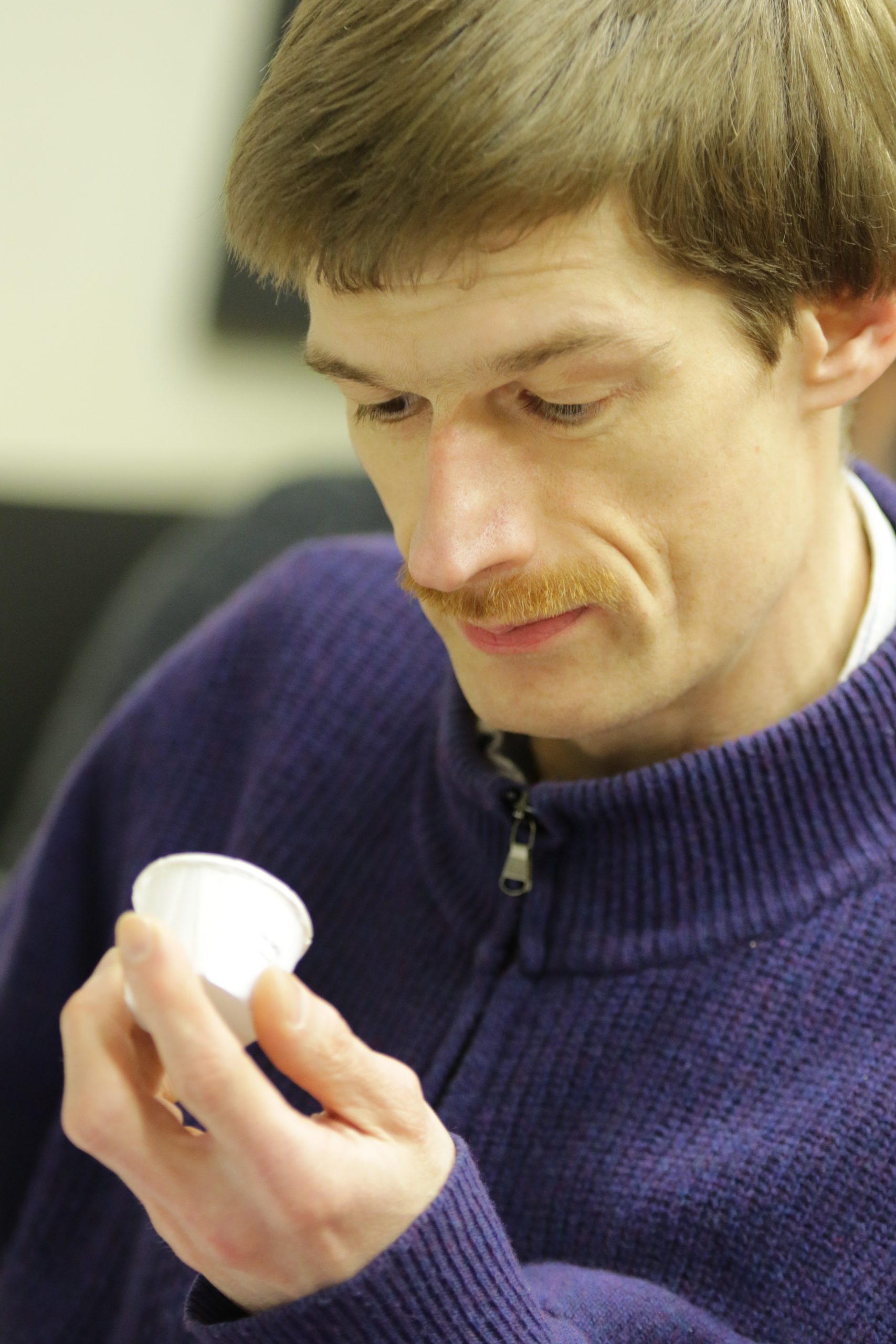
Alex Rast has always passionately loved chocolate, but his serious interest began in 1990. Frustrated with the quality then available at retail, he conducted a series of experiments to make chocolate, systematically working out formulae and techniques.
Awards: Tell us about your work in chocolate and cacao.
Alex: My ‘day job’, actually, is as a (senior) lecturer in Computer Science at Oxford Brookes – equivalent to an associate professor in in the U.S. system – that is, with a permanent research and teaching post. But in fact, my research overlaps strongly with chocolate because I put together AI models, and amongst my research interests are models of chocolate flavour.
I develop and update the profiling system used by the IICCT as well as consulting with mostly smaller-scale manufacturers on optimal process points. I also do extensive work as a third-party reviewer for chocolate, particularly where a maker is bringing out new lines or origins and wants an objective assessment. I am also working on creating a research network for fine cacao.
Most serious research in cacao has been in the bulk sector, however we know that fine cacao varietals have different flavour chemistries, optimum post-harvest and production treatments, and genetic profiles. There is a need for dedicated fine cacao research and this is what this network will do – link research groups and institutions with interests in the fine sector for collaborative projects, initiatives, and hopefully, conferences.
Awards: Can you tell us something about how you came to be judging chocolate, and what
led you to the International Chocolate Awards?
Alex: I often get asked how I got into the chocolate industry at all. It started, in fact, some decades ago when, dissatisfied with what I perceived to be a generally poor-quality standard amongst available chocolates (especially in the UK), I decided it must be possible to do better, and resolved to make my own. Some 50 experiments later (conducted according to rigorous scientific methodology), I produced what I felt to be an ‘acceptably good’ chocolate (the failures were, naturally, spectacularly bad!). I also instantly recognised this is something I did NOT want to be doing, at least not simply for my own satisfaction. I decided rather to focus efforts on identifying, locating, and trying every chocolate I could possibly find, and then evaluate it according to formal standards to sort out the good from the bad.
Somehow, I cannot recall how, Cadbury’s discovered I had been experimenting with chocolate-making and asked me to consult on a new chocolate line they were producing for the French market. I did so, this brought me a new series of contacts, and then one thing sort of led to another. I also made contact with Martin Christy, who contemporaneously made a similar journey of discovery in fine chocolate, leading to a more regular role profiling chocolates for his then-emerging website SeventyPercent.com.
Awards: What does it mean to you to be a member of the Grand Jury of the International
Chocolate Awards?
Alex: At the very first International Chocolate Awards event (Italy 2012) there were only Martin, myself, and Monica Meschini round a table at the end, going through numerous entries. I think the role of any Grand Juror is, more than anything else, to act as an impartial overseer of the process and make sure that ‘due process’ is observed.
The other major job of the Grand Juror is to look for obvious anomalies in Main Round judging. Grand Jury does not have unlimited or arbitrary scope to overturn or modify Main Round scores. At the same time, there are cases where Main Round reflects some bias or judging irregularity. One of the most common is when a judge tries to score products so as to put them in an imagined ‘rank order’. This is not the correct way to judge, and it in fact can systematically distort the outcome because it can be proven mathematically that rank-order scoring systems cannot reliably reflect the ‘true’ or ‘fair’ distribution of opinion! These are things I can identify using powerful statistical techniques and flag up at GJ for discussion. Naturally, at GJ there is a very great deal of tasting to be done – it is not enough to sign off on a score simply based on technical factors. We made the decision at the outset of ICA that taste must be paramount, so this always occurs in GJ, with the opportunity, perhaps, to give each product a last, more appraising evaluation.
Awards: What are your particular interests as a judge, or the categories that interest you
most when judging?
Alex: Probably like the majority of Grand Jurors, my heart is really with the plain
dark bars (and it’s easily what I actually buy the most of). But there are 2 other categories I get really excited by: plain ganaches (the ultimate test of a chocolatier), and dark nut pralines (this because hazelnuts are one of my favourite flavours of all). It helps that in the nut pralines category there is one exponent above all: Guido Castagna, who simply represents the best possible output; I would certainly like to see more
competitors learn from his results and methods and start to present some stiff competition.
Plain ganaches, by contrast, never seem to attract as many entries as I would hope, there are some great ones out there, but I would definitely like to see more entrants trying with more interesting, high-end varietals such as Chuno or VRAE99 (the so-called ‘Ganzo’ bean of the Chuncho cluster).
Finally, one more in the ‘would-love-to-see’ category: a blueberry chocolate made to an ultimate standard. I’m still waiting for the definitive interpretation – is it a ganache? An inclusions bar? A ‘ground-in’ infusion? A jelly? Entrants – if you can create the ultimate blueberry chocolate, matching great berries with a great origin that complements the flavour – you will have my vote!